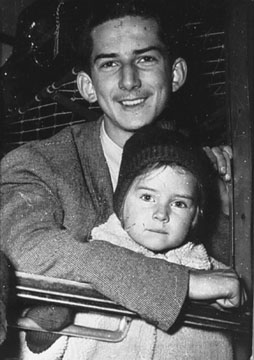The Federal Republic of Austria (Österreich) is located in the alpine region of central Europe. The official language of Austria is German. Austrian immigrants have arrived in Canada in several distinct waves since the late 19th century. The 2016 census reported 207, 050 people of Austrian origin in Canada (20, 230 single and 186, 820 multiple responses).
History
Prior to 1918, the country now known as Austria was part of a much larger multinational state called the Austro-Hungarian Empire, of which Vienna was the capital. Austro-Hungary's territory also included present-day Hungary, Croatia and Slovenia and the area of the present Czech Republic and Slovakia, as well as parts of Romania, Poland, the Dalmatia, Bosnia and northeastern Italy. Ethnic Germans from the non-German countries of the former empire are sometimes called Old Austrians (Altösterreicher).
In 1918 Austria-Hungary broke into several different nations. The Republic of Austria was proclaimed, but its development was hampered by economic difficulties and political dissension. It was occupied in 1938 by German forces and integrated into the German Reich, but was re-established after the Second World War (WWII).
Migration and Settlement
Like many other immigrant populations, Austrians left their homes for economic or political reasons to seek freedom, opportunity or land in Canada (see Immigration in Canada). In the two decades prior to the First World War (WWI), many German-speaking families of Austro-Hungarian origin were attracted to the Prairies. They came from Ukraine, Bukovina, Hungary, Transylvania, Burgenland and Lower Austria. The Saskatchewan communities of Claybank, Edenwold, Fort Qu'Appelle, Indian Head, Kendal, Kennell-Craven, Mariahilf-Grayson, Markinch, Silton, Spring Valley and Vibank were among the destinations of this wave of agricultural immigrants. The 1921 census reported 57 535 Austrians in Canada.

A second phase of Austrian immigration brought about 5000 people to Canada between 1926 and 1933. This group was more urban and settled in the larger population centres to a greater extent.
After Austria's annexation by Germany (Anschluss) a number of refugees and prominent émigrés of Austrian origin came to Canada. While their political views may have differed, these Austrians initiated several organized activities toward the re-establishment of an independent Austria.
Finally, the largest influx of immigrants from Austria took place after WWII, from 1946 until the early 1970s. During this period, 67 000 people giving Austria as the country of their last permanent residence arrived in Canada.
In the 2016 census, 207, 050 people in Canada reported being of Austrian origin. Most Austrian-Canadians reside in the provinces of Ontario (72, 480 people), British Columbia (48, 515 people) and Alberta (39, 530 people).
Social Life and Community
People of Austrian descent are widely dispersed among the general population of Canada. Austrian societies, organizations and clubs exist in many major cities in Canada, including Ottawa, Calgary, Montreal, and Vancouver. The focus of these organizations tends to be social and cultural.

 Share on Facebook
Share on Facebook Share on X
Share on X Share by Email
Share by Email Share on Google Classroom
Share on Google Classroom





